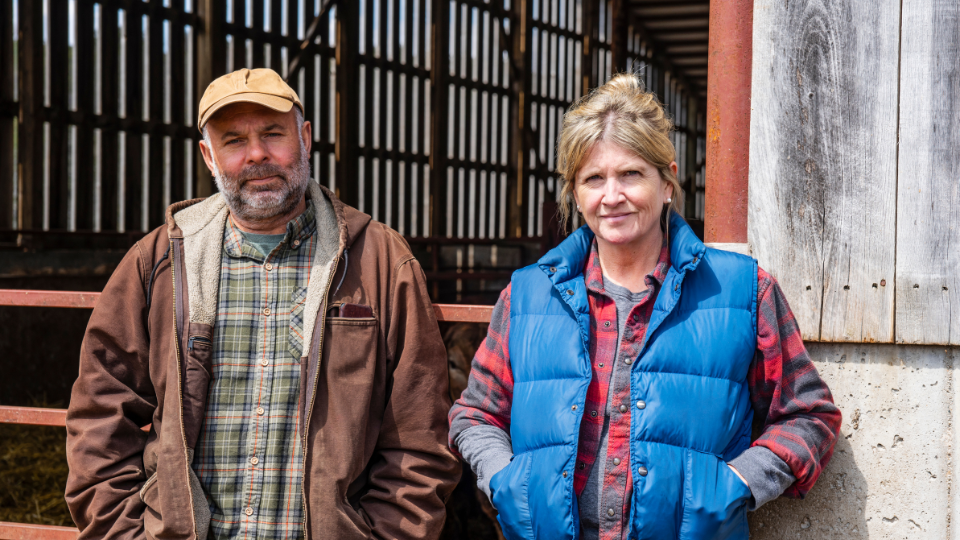Finding Wellness Through Family Fun

Agricultural producers are well known for instilling the value of hard work in their children. This sets their children up for success by preparing them to work hard enough to achieve their goals. At the same time, it is important to balance family work in agricultural production with family leisure—spending time together doing enjoyable activities. In this blog post, we will cover how scholars think about leisure, outcomes from family leisure, and simple tips for spending (and improving) leisure time together as a family.
Thinking about Leisure
When scholars think about family leisure, they typically divide it into two categories: core leisure and balance leisure (Townsend et al., 2017). Core leisure are activities that require little planning and are typically home-based, cheap, and common. Examples of core leisure activities include family dinner, movie nights at home, going for walks, and playing board or card games. In contrast, balance leisure activities require more planning and typically occur outside of the home, cost money, and occur infrequently. Examples of balance leisure activities include family vacations, road trips, and attending sporting events. You can think about them like the difference between watering your crops (core leisure) and plowing your field (balance leisure) —both activities are important, but plowing your field happens less often and requires more planning and resources. Both core leisure and balance leisure are important ways for families to connect, maintain flexibility, and improve communication (Buswell et al., 2012; Townsend et al., 2017).
Outcomes from Family Leisure
Many different scholars have studied the relationships between family leisure and family outcomes, like family life satisfaction, family functioning, and family communication. Summarizing these different studies, Townsend et al. (2017) concluded that when families spend enjoyable time together, the family functions better, has improved communication, and family life is more satisfying. This pattern can become a cycle: as families have better communication and function better they in turn have more emotional energy for leisure!
While both core leisure activities and balance leisure activities are helpful, research is clear that core leisure activities are more directly tied to family outcomes (Buswell et al., 2012; Townsend et al., 2017). One reason for this is that core leisure activities happen more regularly, leading to a larger effect over time than occasional trips. This is encouraging, because it means that you do not need a lot of planning or money to reap the benefits of family leisure.
Importantly, Townsend et al. (2017) also found that family members often view family leisure differently which can lead to different outcomes for each individual. For example, teenagers may view balance leisure activities (e.g., vacations, camping trips, etc.) as more important and impactful than parents view them. This highlights the importance of engaging in a variety of activities so that each family member can participate in family leisure that they enjoy, at least some of the time.
Constraints on Family Leisure
While the benefits of family leisure are well documented, many families face challenges, such as a family member with physical or developmental disabilities. These families may not be able to engage in certain types of activities and may need to plan family leisure more extensively than other families. Getting together with other families with similar experiences can be a powerful way to enjoy leisure together, as well as to build friendships and get new ideas (Sharaievska & Burk, 2018).
Does Technology Help or Hurt?
For many families, individual or shared technology use is a frequent occurrence during family leisure. While media can be used to strengthen relationships (Morris, 2020), when family members use it too much or use it instead of interacting with each other, it can lead to problems. Research shows increased problematic behavior in children, including temper tantrums, whining, and being hyperactive when they spend too much time with tech. (McDaniel & Radesky, 2018). Also, , when couples spend too much time distracted by technology, they report less satisfaction with shared leisure activities and report increased conflict in their relationship (McDaniel et al., 2021).
Ideas for Application
- Put the phones down and get present. Putting away electronic devices during family leisure can make the leisure more enjoyable and effective for everyone (McDaniel et al., 2021). Instead of focusing on a device, focus on the activity and the people you are doing it with. Research suggests that the ability to get present makes it easier to savor enjoyable activities, leading to more positive emotions and better well-being and overall life satisfaction (Kiken et al., 2017). If you are going to use technology during family leisure, make sure to use the technology in service of building the relationship, rather than using it to avoid the relationship (Morris, 2020).
- Schedule mandatory family fun. As children develop, they can become involved in many activities outside the home. This can make it challenging to spend time together as a family. You may find it helpful to schedule “mandatory family fun,” a regular time when all family members are expected to come together to do something fun, like play board games. You could also set rules about technology such as turning phones off or removing them from where you are spending time together.
- Involve children in selecting family leisure activities. If children have a say in what family leisure looks like, they may be more willing – even excited – to participate. Older children can come up with potential activities on their own; for younger children, consider giving them a choice between two options equally acceptable options.
Conclusion
Family leisure is an important way to increase overall health, satisfaction, and well-being in families. While flashy vacations and trips can be fun, it’s the daily time spent together that matters most. Just like how you wouldn’t think of going weeks without watering your field, try to invest time in having fun together on a regular basis, not just every now and then.
References
- Buswell, L., Zabriskie, R. B., Lundberg, N., & Hawkins, A. J. (2012). The relationship between father involvement in family leisure and family functioning: The importance of daily family leisure. Leisure Sciences, 34(2), 172–190. https://doi.org/10.1080/01490400.2012.652510
- Kiken, L. G., Lundberg, K. B., & Fredrickson, B. L. (2017). Being present and enjoying it: Dispositional mindfulness and savoring the moment are distinct, interactive predictors of positive emotions and psychological health. Mindfulness, 8(5), 1280–1290. https://doi.org/10.1007/s12671-017-0704-3
- McDaniel, B. T., Galovan, A. M., & Drouin, M. (2021). Daily technoference, technology use during couple leisure time, and relationship quality. Media Psychology, 24(5), 637–665. https://doi.org/10.1080/15213269.2020.1783561
- McDaniel, B. T., & Radesky, J. S. (2018). Technoference: Parent distraction with technology and associations with child behavior problems. Child Development, 89(1), 100–109. https://doi.org/10.1111/cdev.12822
- Sharaievska, I., & Burk, B. (2018). Recreation in families with children with developmental disabilities: Caregivers’ use of online and offline support groups. Therapeutic Recreation Journal, 52(1), Article 1. https://doi.org/10.18666/TRJ-2018-V52-I1-8446
- Townsend, J. A., Van Puymbroeck, M., & Zabriskie, R. B. (2017). The core and balance model of family leisure functioning: A systematic review. Leisure Sciences, 39(5), 436–456. https://doi.org/10.1080/01490400.2017.1333057
- Walton, K. M. (2019). Leisure time and family functioning in families living with autism spectrum disorder. Autism: The International Journal of Research and Practice, 23(6), 1384–1397. https://doi.org/10.1177/1362361318812434
Related Research














